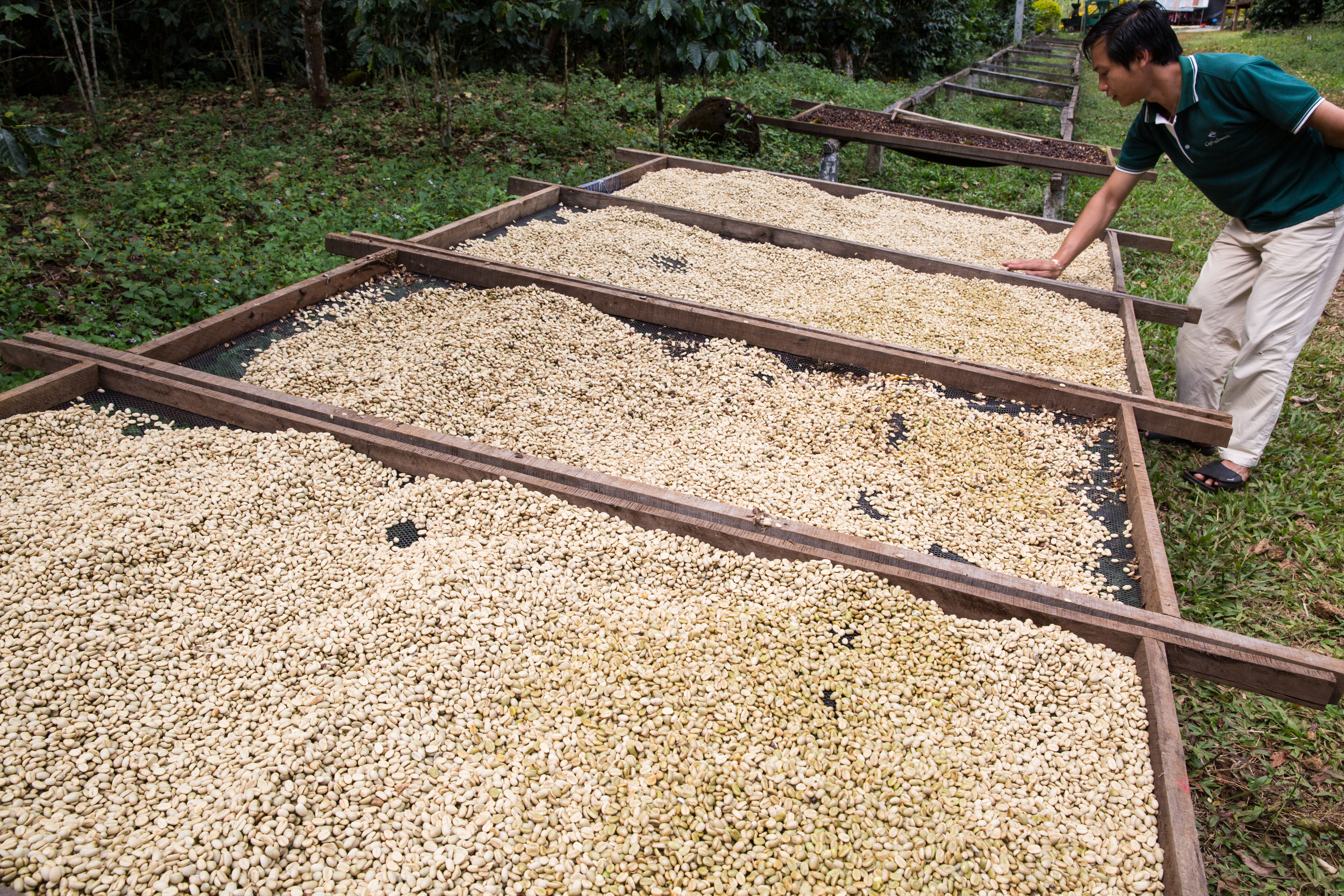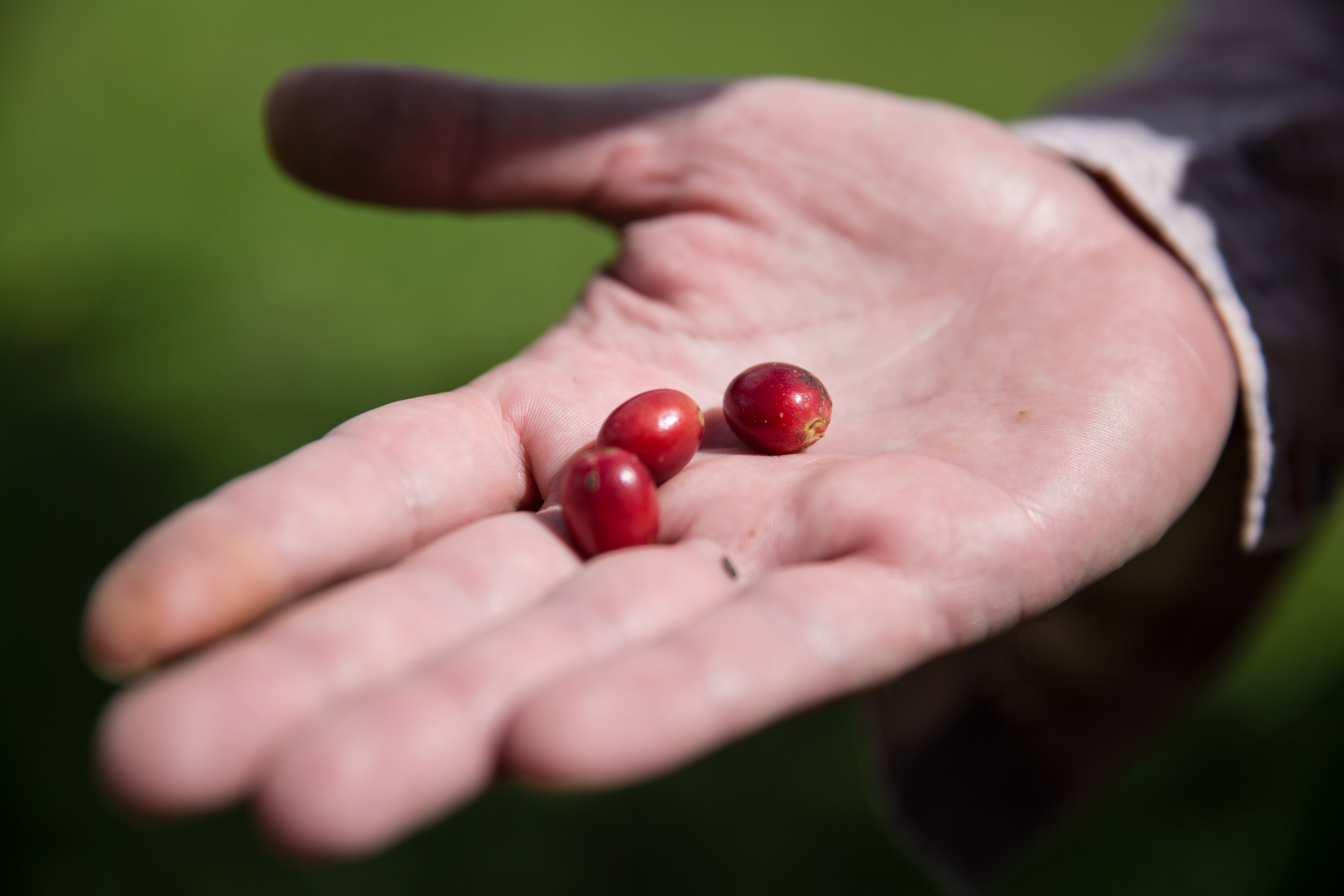27
Feb 2017
Lao Coffee
Laos has a special and new relationship with coffee. The first coffee plants were introduced to the country by the French colonialist around 1915. However coffee plantations in Laos started only a few decades ago and until now Lao coffee has not been well known for its quality.
The origins of Lao Coffee
With an elevation range of 1,000 to 1,350 meters, several rivers, an ample rainfall, generally cool temperatures and a rich soil, the Bolaven Plateau, in the south of Laos, is the perfect spot for agriculture. Rice, tea, pepper, bananas, and coffee are the main sources of farming revenue.
Laos produces Rubusta and Arabica coffee beans that are now of the finest quality. Today, around 20,000 families throughout the country depend on the coffee harvest as their main source of income. In the last 2 decades, Laos also saw a few farming companies entering the coffee market. Currently, the Lao coffee harvest generates about 30,000 tons of coffee per year, mostly Robusta beans as they are easier to grow.
The process of growing coffee
Coffee trees are grown under shade. It prevents against over-producing whch lower the price of sale. Originally, coffee trees were planted in the jungle using the natural tree canopy for shade. After 5 years of growth, the coffee tree reaches its maturity and start producing coffee beans.
In spring, with the rainy season, the coffee trees grow coffee buds called cherries. At the beginning of the dry season, around November, the cherries are ready to be harvested.
The delicate part starts here. Choose the perfect moment to harvest the coffee cherries. Too soon, the coffee will taste sour. Too late, the coffee will be fermented. Arabica coffee will be ready first. Then from February to March, Robusta coffee will reach its pick of taste.
From the cherry to the coffee bean
A coffee cherry consists of two coffee beans and has a very thick and bitter skin.
There are two main methods to produce green coffee beans from the coffee cherry: the wet process and the natural process.
The Wet Process is used for Arabica coffee. First coffee beans are mechanically pulled out of the cherry, they are then left to ferment for a day to break down the remaining layers covering the bean. The beans are washed and laid out to dry in their layers. This method produces a great balance between acidity and body creating a flavorsome coffee bean.
The Natural Process is used for Robusta coffee. The cherries are dried in the sun for 20 days. After drying, the cherries are hulled, graded and sorted for export. This second process produces a fruity coffee with a heavier body and less acidity.

How to taste a coffee
Experts judge coffee on six different criteria’s: fragrance, aroma, flavor, acidity, body, and aftertaste.
When smelling dry coffee beans, the intensity of the fragrance indicates the freshness of the bean used.
Hot water is added so the expert can measure aroma. There are over 800 aromatic compounds in coffee, making coffee one of the most complex experiences for the senses.
Then the expert will then taste at the flavor. It can be winey, earthy or fermented.
A balanced acidity in coffee brings out all the other qualities in the cup. Too much and it overwhelms the flavor; too little and coffee will lack structure and the flavors lose their brightness.
Body is the weight of the coffee that can best be sensed by allowing the coffee to rest on the tongue and by rubbing the tongue against the roof of the mouth. Then see if the coffee leaves behind a mild sweetness or bitterness.
The Arabica grown in Lao is well known for its flavor of lemony citrus, floral and chocolate notes.
The Lao Robusta has a nice balance between acidity and bitterness.
Key players
In Laos, some small business enterprises decided to promote this high-quality coffee in throughout Laos and beyond.
Saffron Coffee in the North of Laos
Saffron Coffee is a company which supports Lao hill tribe farmers, protects the environment through their growing and processing methods, and produces specialty northern Lao Arabica.
Lao Mountain Coffee in Vientiane
They are a local coffee roasting company focused on specialty grade coffee grown on the Bolaven Plateau by local farmers.
http://www.laomountain.com/home.html
Mystic Mountain Coffee in the Bolaven Plateau
It is a coffee plantation in southern Laos which grows organic Arabica and Robusta. They decided to share their knowledge and promote this local coffee by organizing tours in around the plantation.
http://www.mysticmountain.coffee/



